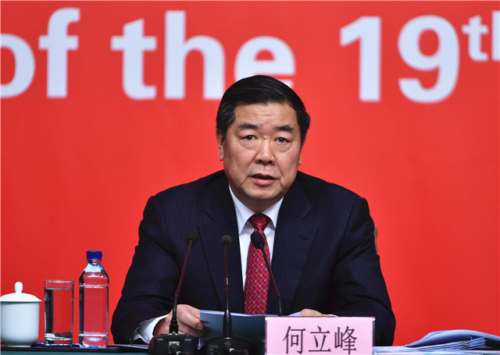Can Alibaba’s six-ring circus succeed?
In its first earnings call following a restructuring prompted by regulatory pressures and investor expectations, Alibaba is signaling a shift toward financial optimization. But can it restore investor confidence and keep the government happy?

The keywords that kept popping up on Alibaba’s May 18 earnings call were narrowing, and different versions of the word improvement, which showed up 17 times in the official press release, a sign that Alibaba and its investors remain cautious but optimistic about the quarter that passed and what the future holds.
The earnings call is the first after Alibaba’s historic reorganization, which divided Alibaba into six uneven parts, with each part containing core business segments as well as remnants of many endeavors that have not generated enough traction to be stand-alone companies or business units. The restructuring was interpreted by many analysts as a way for the tech behemoth to placate government regulators who were displeased by Alibaba’s size, influence over China’s financial sector, and the swaggering ways of its founder, Jack Ma (马云 Mǎ Yún).
Alibaba’s new capital management and risk committees
Alibaba Group announced a major restructuring into six distinct business units, aiming to increase shareholder value and market competitiveness. This is a pivotal governance overhaul in its 24-year history. The newly formed business units are Cloud Intelligence Group, Taobao Tmall Commerce Group, Local Services Group, Cainiao Smart Logistics, Global Digital Commerce Group, and Digital Media and Entertainment Group, each governed by its own CEO and board of directors.
We will begin to see how the new six-part Alibaba works. The company hinted at its future on the earnings call, announcing the formation of a capital management committee under Alibaba Group’s Board of Directors.
Comprising key members like Vice Chairman Joseph Tsai (蔡崇信 Cài Chóngxìn), ex-CFO Maggie Wu (武衛 Wǔ Wèi), CEO Daniel Zhang (張勇 Zhāng Yǒng), and President Michael Evans, the committee aims to boost shareholder returns and manage major capital allocation across business groups. As Alibaba navigates its transition from a growth to a maturity phase, the power rests with those who hold the purse strings.
Furthermore, under the new holding structure, a newly formed compliance and risk committee, which is separate from the capital management committee, will supervise an undetermined but wide-ranging list of “reserved matters.” These exclude financial reporting, but everything else will require approval from the committee.
In other words, the six new Alibaba entities will still be controlled by the same people as before the restructuring.
This revamped structure, accompanied by layers of executive management, might seem contradictory to the intent of fostering independence, but it should be assessed considering the nature of Alibaba as a conglomerate with Chinese characteristics and in the company’s new era of financial optimization.
Make like GE: Financial optimization to improve valuation
In May 2014, before Alibaba’s IPO on the New York Stock Exchange, Harvard Business Review published a prescient piece titled “Alibaba looks more like GE than Google.” (Alibaba went public in September of that year, raising $21.8 billion, making it the largest IPO in history at the time.)
And just like the quintessential conglomerate General Electric (GE) under the leadership of its then CEO Jack Welch, Alibaba’s chairman and CEO, Daniel Zhang, is engaged in its version of “fix, sell, or close” to enhance valuation and shareholder value. Welch led GE from 1981 to 2001, and became famous for executing spin-offs, streamlining the company’s operations, and reducing costs.
Alibaba, like Welch’s GE, has begun cost-cutting, including slashing jobs and divesting from non-performing businesses (or ones that are bleeding cash). These efforts are Alibaba’s “olive branch” to institutional investors during a time of exodus as Chinese companies suffer from the dual stresses of geopolitical problems and a domestic economy more sluggish than it’s been for decades. So it makes sense that Alibaba, led by its former CFO, is now focusing on improving capital efficiency and profit outlook and employing all available financial tools at its disposal.
Alibaba Cloud, for instance, plans to slash 7% of its workforce. In the last year, Alibaba has reduced its workforce by 7.7%, or around 19,725 full-time employees. In addition to cutting costs, potential spin-offs, subsidiary fundraising, and planned IPOs further signify a shift from expansion to monetization.
However, decisions like Alibaba’s Cloud Intelligence Group IPO can be a double-edged sword. Independence for Alibaba Cloud may involve reclassifying assets and bearing future hardware amortization and capital expenditures, potentially impacting the new entity’s profitability and the Alibaba Group’s stake in one of China’s largest cloud platforms.
Alibaba must continue to pursue share buybacks and attract strategic investors to support its valuation. However, the decisions that best support Alibaba’s share prices and decisions may not be aligned with government wishes, policies, and approvals. The successful execution of the upcoming IPOs — including Cainiao Logistics, new retail poster child supermarket chain Freshippo, and others — will serve as a testament to Alibaba’s ability to maneuver competing priorities post-restructuring.
The elephant in the room: The government
Compounding these issues, Alibaba’s decisions remain heavily influenced by Chinese government mandates and the perceived will and intent of the policies. The recent amendments to the China Anti-Monopoly Law are a case in point. The updates have broadened the authorities’ scope to target anti-competitive practices by corporations and government agencies. These modifications regulate the use of technology by platform companies, enhancing accountability through stricter penalties for violations.
Many of these mandates are beyond Alibaba’s control and make optimization even harder. As a conglomerate, Alibaba seeks synergy through diversification. Yet managing diverse operations and juggling competing priorities to satisfy official mandates is no easy feat.
It’s worth noting that under the holding company structure, the business units are not entirely autonomous, and the rules of collaboration across the businesses are being written amid the chaos of restructuring. Running such diverse operations efficiently is a herculean task, and the Chinese phrase huàn tāng bù huàn yào (换汤不换药, changing the form but not the substance) encapsulates the situation well. While the units may appear independent on the surface, a top-down oversight layer remains in place; the “big brothers” are still there, watching over them.
In a nutshell, Alibaba must balance the benefits of its diversified business units against the complexity of its operations as a conglomerate with its primary market in China. Details are still being ironed out, and Alibaba is living through its own Warring States period, a time of reforms and consolidation of power in China’s history from 481 to 221 B.C.E.
The clock is ticking for Daniel Zhang, who, in his fourth year at the helm, has struggled to stem the defection of Western institutional investors and convince internal stakeholders of his vision for Alibaba’s future.
Zhang’s signature initiative, “the Middle Platform Strategy,” a small front office and middle management organizational model, ended in defeat. The middle platform strategy is good in theory: By consolidating corporate needs and allocating tasks from the “middle platform,” Alibaba could centralize resource allocation and increase efficiency. However, a drawback is its potential to hinder business innovation due to excessive specialization and create additional layers of coordination. Alibaba reversed back to a more agile model and altogether scrapped it recently.
Whether Alibaba’s split will unlock hidden value and shift investor perception is to be determined. Still, a few things are certain: Steeper job cuts in the name of optimization are here to stay, and behind-the-scenes Alibaba-style power consolidation will create ripple effects felt across the organization.






